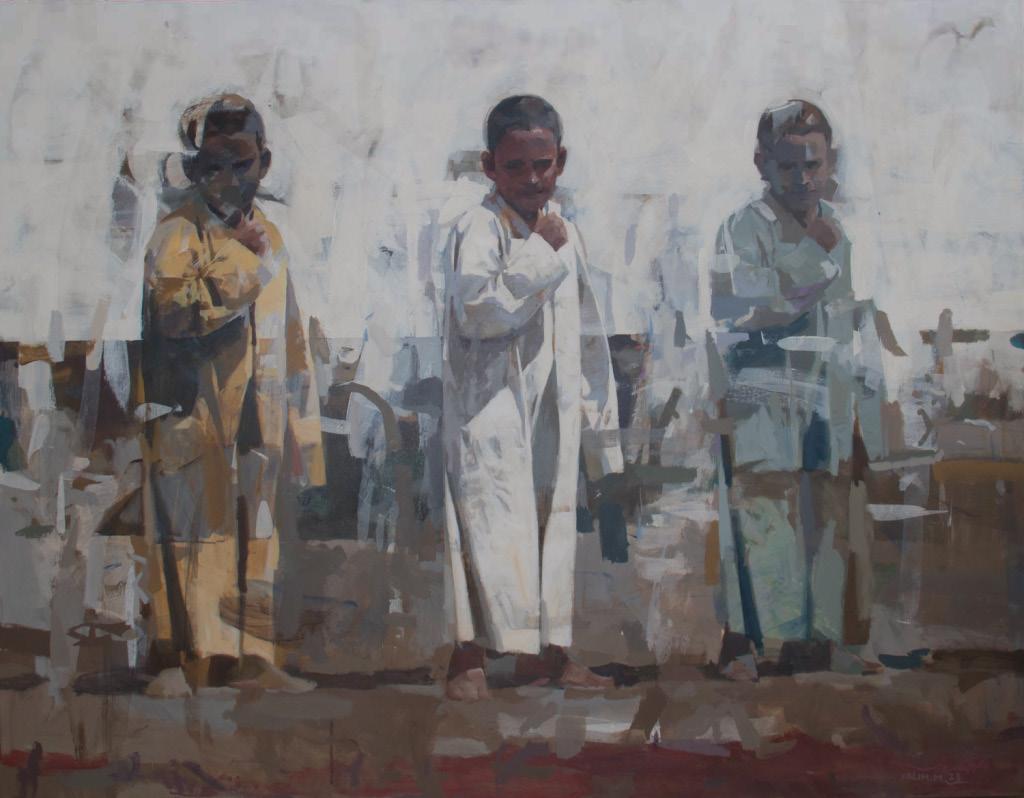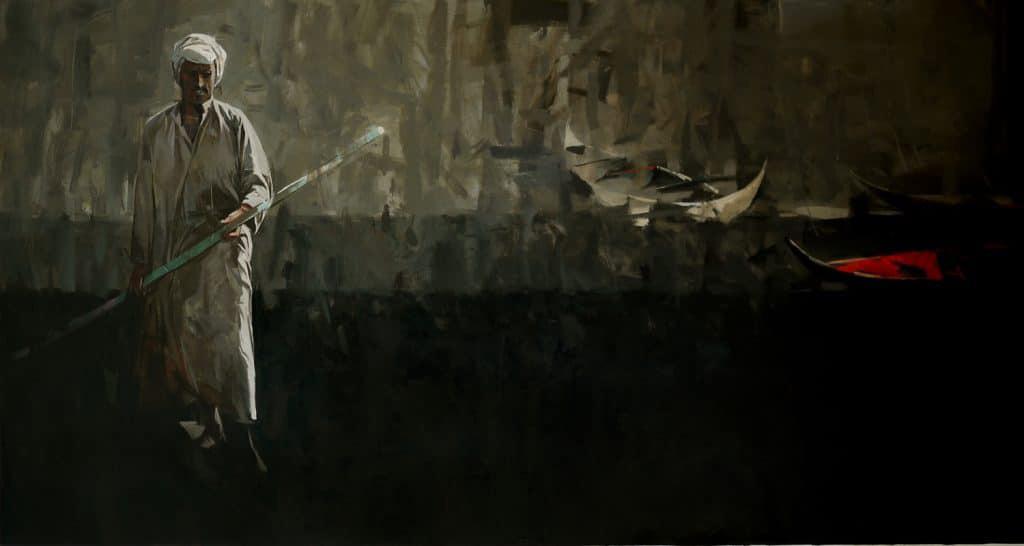Blending and shifting, Salim Mathkour’s figures and landscapes modulate across planar existence. Showing mastery across his chosen painterly discipline, Mathkour’s subjects range from the vibrant textures of life to the dappled countrysides, from inhabitants of marshes to watery and abandoned Mashhoof (boats used by the Sumerian people). Choosing to illustrate the pains and trials of his native Iraq, Mathkour places a gentle focus on his people. His most recent work prominently features women and children in their jubilant play, or caught in a pensive glance at the viewer. The paintings are underlined with urgency — the figures wise far beyond their years as is required when inhabiting lands under siege.
Through his work, Mathkour reminds us that the first civilizations are said to have been located within the modern borders of the Iraqi nation. Some of his earthy landscapes smell of mud and echo a common origin story of a human collective. Many of his paintings use simplicity and a monotone color palette to showcase the people in them — his paintings and brushstrokes detail and reflect a variety of human emotions, from feelings of hope and joy to sorrowful expressions encircled and dashed by frenetic strokes illustrating the fraught tension of a people in deep crisis. Mathkour received his Bachelor of Fine Arts in Baghdad. In 1993, Mathkour left Iraq to Jordan and settled there for more than 6 years, where he has been quite active on the art scene, before he moved to Qatar where he currently lives and works. He has exhibited extensively in the Middle East, Europe, Asia, and North America. His work was acquired by Mathaf: Arab Museum of Modern Art in Doha, Qatar, the Fabriano International Watercolor Museum in Italy, and the Cairo Amman Bank in Jordan and is featured in private collections all over the world.
 SALIM MATHKOUR ON
SALIM MATHKOUR ON















My artistic search originated from the culture of Maysan, in southern Iraq, where I grew up. Even after so many years, I can still breathe the smell of mud and the marshes of my native town. However, my style has been taking shape through the past three decades since the time when I left Baghdad in 1993 and over the years after, first Jordan and later in Qatar. My art bears the footprint of the pain caused by immigration. My work expresses the condition of an Iraqi exile, the human tragedy, and memories of my childhood. My roots also taught me also how to see and capture on the canvas the utmost beauty of life – the dazzle of a natural landscape or the innocence of a woman peacefully asleep with a book on her lap. Painting is a feat of the mind and soul. I feel through things and manifest them on the canvas, capturing their innermost essence. For this reason, my approach is contemplative. I meditate on the surface of the work and focus on achieving simplicity in lines and richness in color through the use of oil paint or play with the fluidity and finesse of watercolors. I am forever fascinated with the ductility and versatility that the medium affords and the many more hidden secrets it holds.

